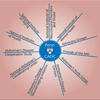Design of comprehensive Alzheimer's disease centers to address unmet national needs
- PMID: 20298979
- PMCID: PMC2842603
- DOI: 10.1016/j.jalz.2009.11.004
Design of comprehensive Alzheimer's disease centers to address unmet national needs
Abstract
The problem of Alzheimer's disease (AD) exemplifies the challenges of dealing with a broad range of aging-related chronic disorders that require long-term, labor-intensive, and expensive care. As the baby boom generation ages and brain diseases become more prevalent, the need to confront the pending health care crisis is more urgent than ever before. Indeed, there is now a critical need to expand significantly the national effort to solve the problem of AD, with special focus on prevention. The Campaign to Prevent Alzheimer's Disease by 2020 (PAD2020) aims to create a new paradigm for planning and supporting the organization of worldwide cooperative research networks to develop new technologies for early detection and treatments of aging-related memory and motor impairments. PAD 2020 is developing an implementation plan to justify (1) increasing the federal budget for research, (2) developing novel national resources to discover new interventions for memory and motor disorders, and (3) creating innovative and streamlined decision-making processes for selecting and supporting new ideas. Since 1978 the National Institute on Aging or National Institute of Health (NIH) established an extensive national network of AD research facilities at academic institutions including AD Centers (ADCs), Consortium to Establish a Registry for AD, AD Cooperative Study (ADCS), AD Drug Discovery Program, National Alzheimer's Coordinating Center, National Cell Repository for AD, and AD Neuroimaging Initiative. However, despite the success of these programs and their critical contributions, they are no longer adequate to meet the challenges presented by AD. PAD 2020 is designed to address these changes by improving the efficiency and effectiveness of these programs. For example, the ADCs (P30s and P50s) can be enhanced by converting some into Comprehensive Alzheimer's Disease Centers (CADCs) to support not only research, but also by being demonstration projects on care/treatment, clinical trials, and education as well as by seamlessly integrating multisite collaborative studies (ADCS, AD Neuroimaging Initiative, Patient Registries, Clinical Data Banks, etc) into a cohesive structure that further enhances the original mission of the National Institute on Aging ADCs. Regional CADCs offer greater efficiency and cost savings while serving as coordinating hubs of existing ADCs, thereby offering greater economies of scale and programmatic integration. The CADCs also broaden the scope of ADC activities to include research on interventions, diagnosis, imaging, prevention trials, and other longitudinal studies that require long-term support. Thus, CADCs can address the urgent need to identify subjects at high risk of AD for prevention trials and very early in the course of AD for clinical trials of disease modification. The enhanced CADCs will allow more flexibility among ADCs by supporting collaborative linkages with other institutions and drawing on a wider expertise from different locations. This perspective article describes the University of Pennsylvania (Penn) CADC Model as an illustrative example of how an existing ADC can be converted into a CADC by better utilization of Penn academic resources to address the wide range of problems concerning AD. The intent of this position paper is to stimulate thinking and foster the development of other or alternative models for a systematic approach to the study of dementia and movement disorders.
2010 The Alzheimer's Association. Published by Elsevier Inc. All rights reserved.
Figures



Comment in
-
Commentary on "Design of comprehensive Alzheimer's disease centers to address unmet national needs".Alzheimers Dement. 2010 Mar;6(2):156-7. doi: 10.1016/j.jalz.2010.01.006. Alzheimers Dement. 2010. PMID: 20298980 Free PMC article. No abstract available.
References
-
- Khachaturian ZS, Snyder PJ, Doody R, Aisen P, Comer M, Dwyer J, Frank RA, Holzapfel A, Khachaturian AS, Korczyn AD, Phelps C, Roses A, Simpkins JW, Schneider LS, Albert MS, Egge R, Deves A, Ferris S, Greenberg BD, Johnson C, Kukull WA, Poirier J, Schenk D, Thies W, Gauthier S, Gilman S, Bernick C, Cummings JL, Fillit H, Grundman M, Kaye J, Mucke L, Reisberg B, Sano M, Pickeral O, Petersen RC, Mohs RC, Buckholtz N, Carrillo M, Corey-Bloom JP, Foster NL, Jacobsen S, Lee VM-Y, Potter WZ, Sabbagh MN, Salmon D, Trojanowski JQ, Wexler N. (Reporter, Lisa J. Bain). A roadmap for the prevention of dementia II: Leon Thal Symposium 2008. Alzheimer & Dementia. 2009;5:85–92. - PMC - PubMed
-
- The Alzheimer's Study Group Report: “A National Alzheimer’s Strategic Plan: The Report of the Alzheimer’s Study Group”. 2008. (Available at www.alz.org/news_and_events_16243.asp).
Publication types
MeSH terms
Grants and funding
LinkOut - more resources
Full Text Sources
Medical
Research Materials

